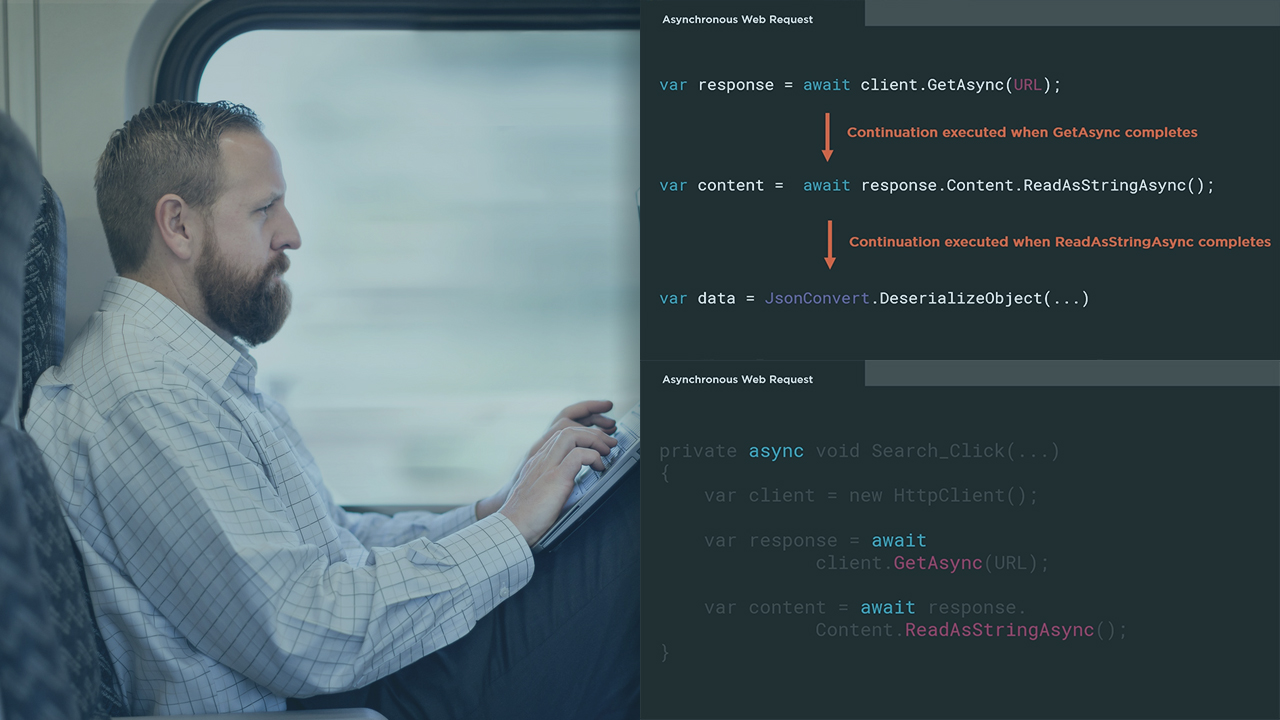- Course
Applying Asynchronous Programming in C# 8
This course will teach you how to get started with asynchronous programming in .NET. You will learn how to apply these patterns in new and existing applications and you will see how to avoid the common mistakes.

- Course
Applying Asynchronous Programming in C# 8
This course will teach you how to get started with asynchronous programming in .NET. You will learn how to apply these patterns in new and existing applications and you will see how to avoid the common mistakes.
Get started today
Access this course and other top-rated tech content with one of our business plans.
Try this course for free
Access this course and other top-rated tech content with one of our individual plans.
This course is included in the libraries shown below:
- Core Tech
What you'll learn
Do you want to build fast, responsive, and overall better applications by applying asynchronous principles? You'll need to understand how to safely and effectively introduce asynchronous programming in your applications. In this course, Applying Asynchronous Programming in C# 8, you’ll learn the fundamentals of asynchronous programming in C#. First, you’ll explore how to properly apply the async and await keywords. Next, you’ll discover the Task Parallel Library and understand how it relates to async and await. Finally, you’ll learn more about how introducing asynchronous patterns affects the application, how to avoid pitfalls, and how to best approach these patterns. When you’re finished with this course, you’ll have the skills and knowledge of asynchronous programming needed to apply this in your C# applications.

